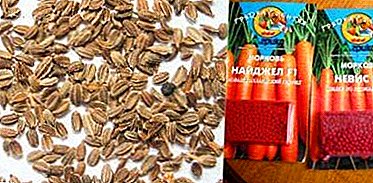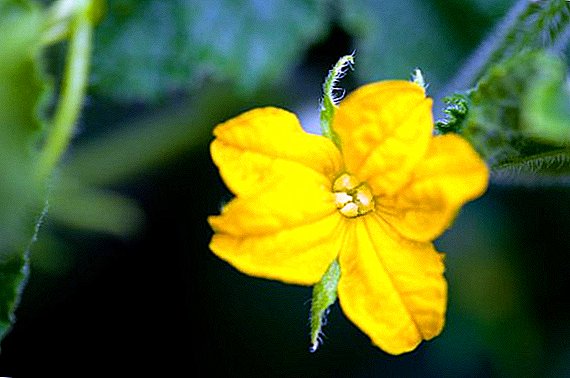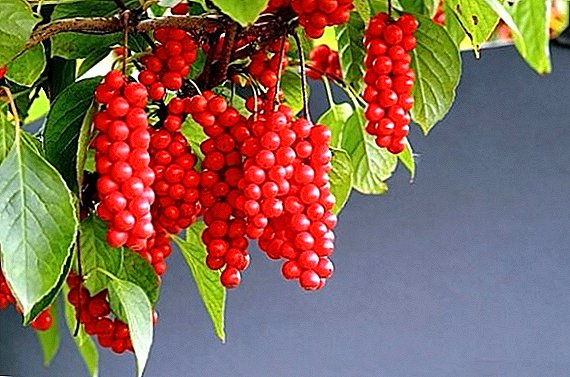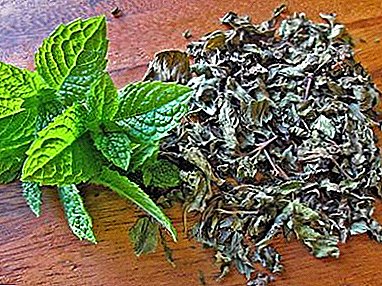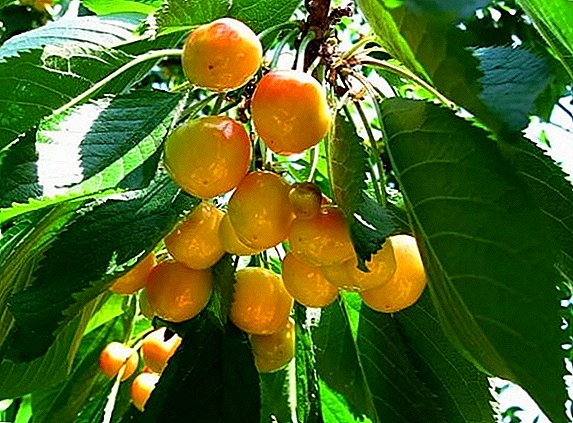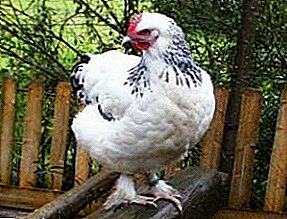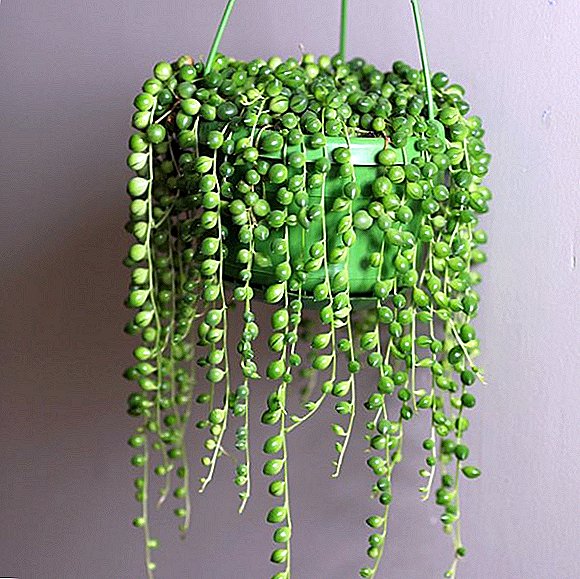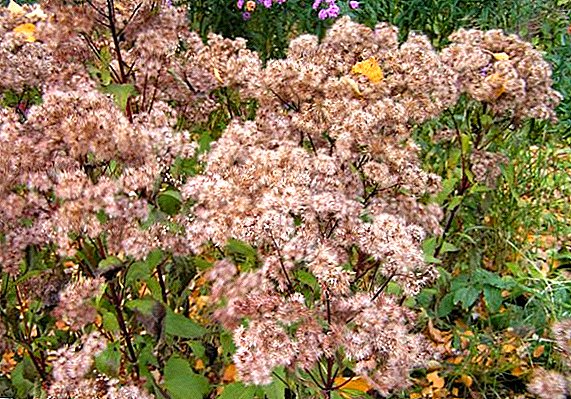
Universal apple variety Silver hoof bears fruits of unusual taste, which are used both in raw form and are excellent for making jam, juice, stewed fruit, and drying.
What kind refers
The silver hoof variety belongs to the summer apple varieties. The variety is considered productive, winter-hardy and drought-resistant. Resistance to various fungal diseases is average. Fruits when properly stored contain from one to two months. Silver hoof variety apple storage conditions:
- relative humidity of air - 90-95%;
- storage in wooden containers is desirable;
- temperature - 0 ° C;
- fruit size calibration;
- sorting apples by grade.
Pollination
Since the apple tree belongs to the self-fruitless type, pollination occurs due to pollen of apple-tree flowers of another variety.
Ideally, plant lanes of two varieties at a distance of four to five meters from one another. Pollinator is best to choose a grade of Anis Sverdlovsk.
Description of Silver Hoof variety
The appearance of an apple tree is characterized by an average tree height, a dense crown of light green color and thick creamy fruits of medium size. See in the photo below what the Silver Hoof apple tree looks like, and also read the detailed description of the tree itself and its fruits.
Medium in height. The crown is rather rare, but densely leafy, round and sprawling.
Skeletal branches, depart from the pillar, practically, at an angle of 90 degrees, straight, compactly placed. The bark of the branches is bright with a yellow tinge.
The formation of fruit on kolchatka and spears. The shoots are curved, dark green in color, medium in size, almost bare.
The leaf of the Silver Hoof variety tree is large, wide at the base, light green in color with raised edges. It has a wide oval shape. The flowers are white and fairly large.
Fruits are not large. The average weight of one apple is 90 grams.
On one tree grow fruits of the same size. The shape of the apple is correct, the surface is smooth, the ribbing is almost imperceptible. Peel dry, covered with a waxy coating, thin. Subcutaneous points almost invisible.
Silver Hoof Fruit Color yellow-cream, turning into orange-red color. The stem is not long, medium in thickness. The seeds are large, round, black-brown in color.
The flesh of the apple is a fine-grained consistency, juicy and firm. The taste of the apple is intense, dessert, sweet and sour. The fragrance is moderately pronounced.
A photo



Chemical composition:
- Sahara - 12.8%;
- Titrated to-you - 0.9%;
- Dry soluble substances - about 15%;
- Ascorbic acid — 12.5 mg per 100 grams;
- R-active islands - 112 mg per 100 grams.
Breeding history
The variety of apple trees Silver hoof is bred by Kotov LA by hybridization of the Rainbow variety with the Snowflake variety in 1988. Selection was carried out at the experimental station of gardening of the city of Sverdlovsk in Russia.
Natural growth region
The silver hoof apple variety is quite a popular variety in Russia, and therefore it is found in many areas:
- Sverdlovsk;
- Chelyabinsk;
- Kurgan;
- Kirov.
The variety is often found in the region of Orenburg and Udmurtia. Distributed in Kazakhstan. However, the zone of natural growth is the West Siberian region.
Yield
 Apple Tree Silver Hoof begins to harvest in the third or fourth year after planting.
Apple Tree Silver Hoof begins to harvest in the third or fourth year after planting.
But the harvest with high consumer qualities can be obtained only in the fifth year.
The variety is quite fruitful. Fruit ripening falls in mid-August.
In apple trees grown in areas of natural growth, occurs a little earlier. The consumer period begins in early September, and lasts until the end of October. Productivity is regular, annual.
Planting and care
The yield and size of the Silver Hoof apple fruit depends on the care. When planting a tree using classic fertilizer. Although the variety is characterized by medium resistance to various diseases, care for the apple tree does not require much effort..
Silver Hoof varieties of apple trees are planted in any of the three seasons:
- autumn (late September - early October);
- spring (late April);
- summer (end of July).
but still recommended autumn for this variety.
IMPORTANT: When planting, avoid places where groundwater is located close to the surface. Otherwise, the seedling will be in the water, and the tree will rot.
The main tips for planting silver hoof apple varieties:

- you need to choose seedlings with a developed root system and purchase them in a zone with the same climatic conditions;
- the territory should be sunny;
- choose young, then he adapts more quickly to the soil on the plot where he is grown;
- planting areas should be well drained;
- to make the tree grow strong and bring the maximum yield, it is recommended to use loam soil;
- properly prepare the landing hole.
The landing algorithm is quite simple. The optimal parameters of the pit for planting an apple of this variety: 0.6 x 0.6 x 0.5 m. The upper layer of the excavated earth is mixed with the lower layer and the following fertilizers are introduced:
Fill the landing pit with a mixture of soil and fertilizer 2/3. Fertile soil without fertilizer is poured on top. Pit watered and again fill the layer of fertile soil.
Now you can carefully plant an apple tree, preferably with someone's help. After, be sure to tie it to a wooden peg by the figure eight.
The next year after planting, in the spring, it is important to form the deciduous crown of an apple tree. It is necessary to trim the ends of each branch.
For the first four or five years, do not give the apple to produce fruits. In the first year in April, trees must be irrigated with mixtures that protect against pests. This procedure should be performed twice.:
- when buds began to swell on branches;
- before blooming buds.
Then the tree no longer needs to be fertilized for a year until next April. Every spring, the apple tree should be given a special care:
Diseases and pests
 Silver Hoof apple is medium in resistance to various diseases.
Silver Hoof apple is medium in resistance to various diseases.
Most often the apple tree of this variety is damaged fruit shrimp and scab.
Fruit Rot - A disease of the fungal type, which penetrates into the middle of the fetus through cracks and wounds created earlier by animals, hail or any other way. The first sign is the appearance of a brown spot on the skin of the apple.which will grow until the apple is completely rotten.
Unfortunately, cases of lesions with scab are still common.. It is important to conduct ongoing prevention.
A feature of scab is that, without hitting the trunk, in the first place it hits the leaves of the tree, and then moved to the fruit. To avoid damage, it is important to isolate the apple tree from other crops in the garden, carefully monitor the plant and constantly disinfect and fertilize the soil.
The reason for the appearance of this fungus can be stagnation of air inside the crown of the tree or increased humidity. The first signs of scab are the appearance of green-brown spots on the leaves., also in a large number of small brown, forming a crust, spots on the fruit.
If the disease still hit the tree, you should immediately begin treating it.. Treatment takes place by tilling the soil around the crop and spraying the tree with various mixtures. As a rule, this is a universal set of measures, which is the prevention and treatment of virtually all diseases of the garden tree.
The best treatments are: urea solution (on average, 7-8 liters are needed per tree), copper oxychloride, which must be used first before flowering, and then during the appearance of the first fruits, and Bordeaux liquid, which can be easily replaced by copper sulfate.
 The Silverhoof variety apple tree produces tasty fruits with valuable chemical composition.
The Silverhoof variety apple tree produces tasty fruits with valuable chemical composition.
It is important that the apples of the tree are characterized by high transportability.
With special preparation, the sapling will germinate on any soil. The tree does not require special care. Medium resistant to various diseases. In case of defeat by pests, treatment does not require much effort.


